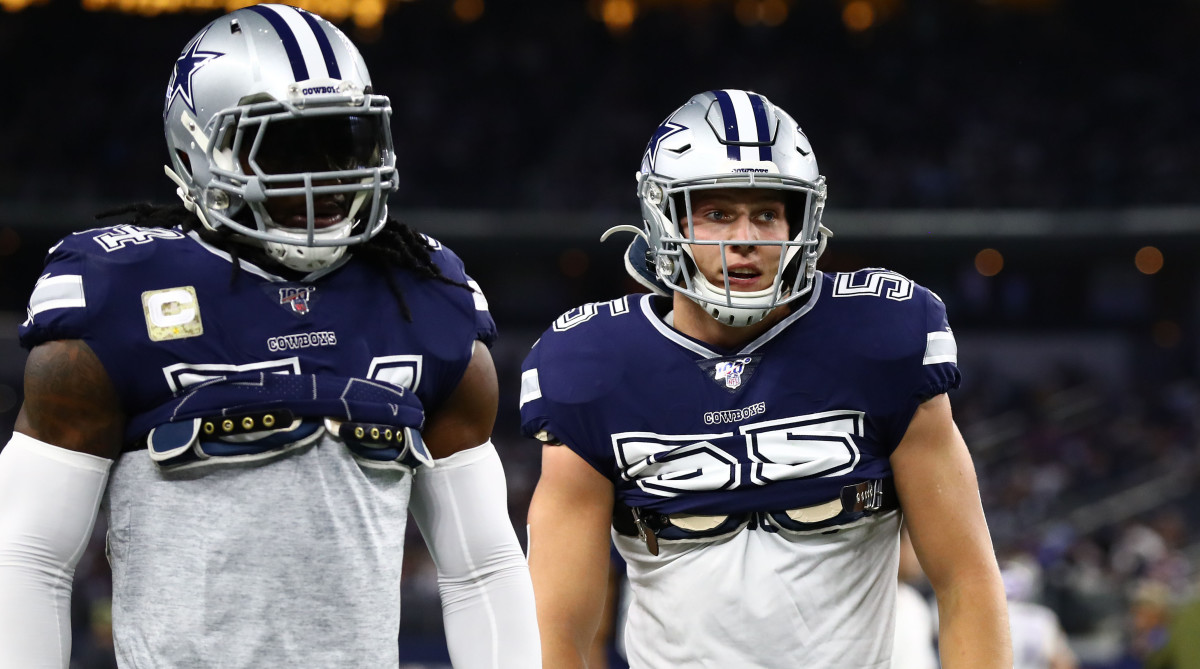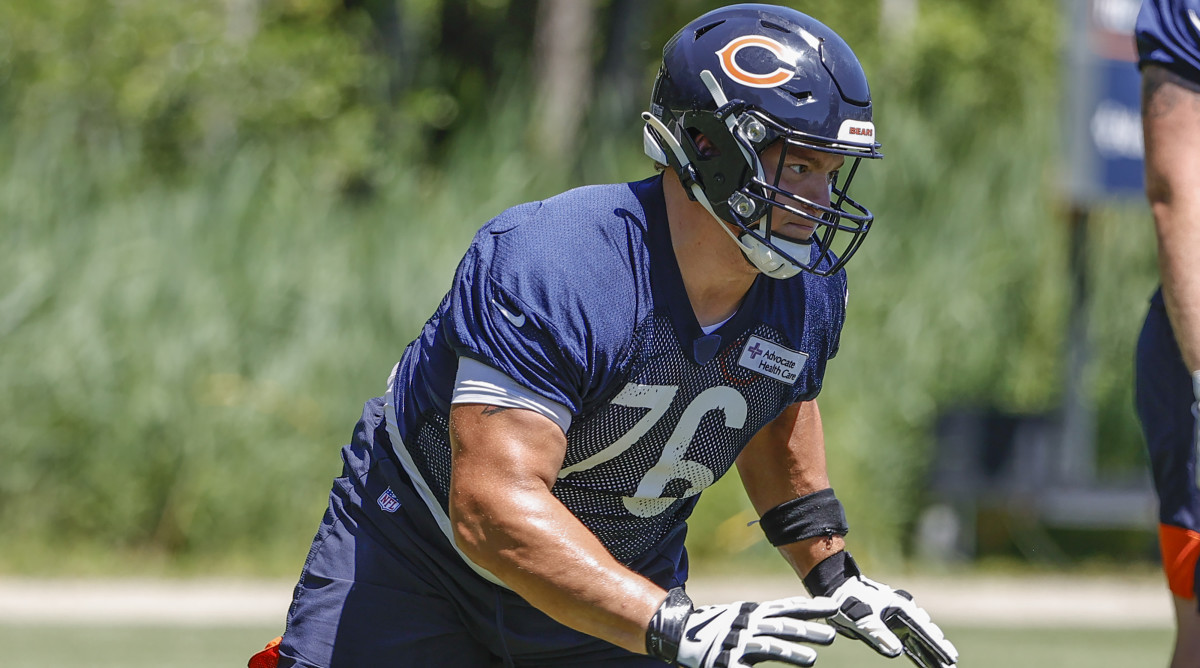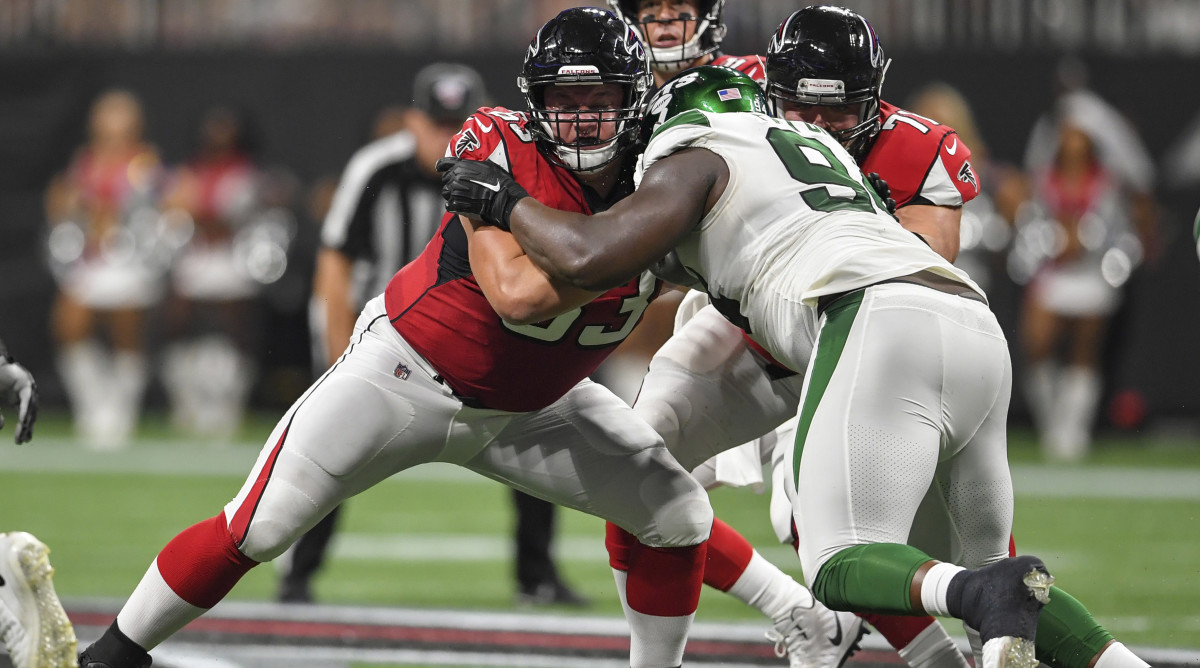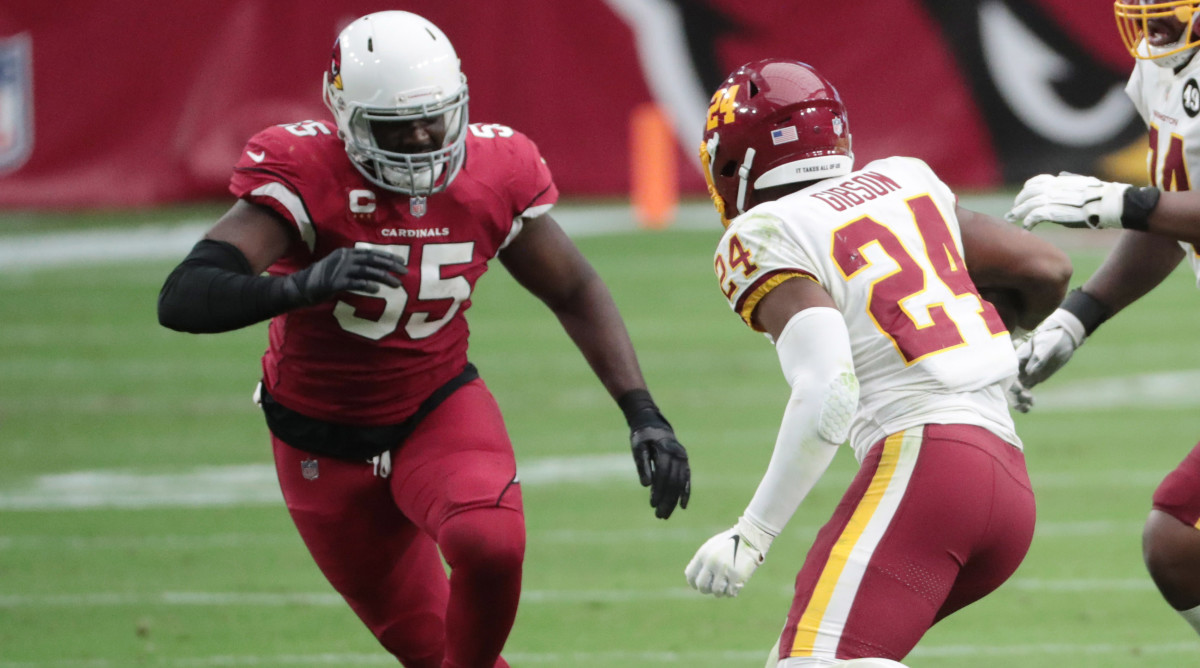Every NFC Team's Biggest Weakness Going Into 2021

In two weeks, rosters will be trimmed to 53 players. In between, hundreds of players will be displaced in what former Jets general manager Mike Tannenbaum used to call the “miniature draft.” Teams may have had their eye on an undrafted free agent who failed to make a roster. They may have had an injury that necessitates a slot being filled. Some teams, truly gaining a whiff of desperation, could even swing a trade.
While they plot out their moves, they’re going to be taking a realistic look at their strengths and weaknesses. Each week opponents game plan for the kind of matchups they can win with regularity. Some teams are more vulnerable than others. Now is the final opportunity to get honest with themselves about what can change for the better before it’s too late. There is something helpless about being locked into a regular season roster with a glaring hole on your team. The good teams do something about that.
Over the next two weeks, we’ll be looking at such weaknesses. Some are going to carry over from last year. Some, due to the strength of the team, are not going to even seem like weaknesses. Some may not be weaknesses soon thanks to the draft. Some may be targets of the miniature draft, or a last-minute trade. Some you may vehemently disagree with sans proper context (and maybe for good reason, as I listed Josh Allen the Bills’ biggest weakness a year ago). For example, I have wide receiver listed for the Saints, when obviously their quarterback room is the weakest total unit on the team and the receiver group has Michael Thomas. But, in the context of their current situation, Thomas is out with an injury, we don’t know what he will look like when he returns and the remainder of the unit doesn’t have the composite strength to buttress the uncertainty at QB.
Here’s what we’ve come up with…

NFC EAST
DEFENSIVE INTERIOR: The 2021 draft class’s lack of interior defenders produced an interesting thought experiment for teams looking to bolster themselves against the run. Can you survive on hyper-athletic off-ball linebackers? Dallas has Micah Parsons, Jaylon Smith and Leighton Vander Esch on the field to counter a smattering of injuries and inexperience up front. Can the likes of Osa Odighizuwa and Quinton Bohanna create large enough traffic jams to produce some fluidity for that unit? Or, do offensive lines find success climbing to the second level, partially negating what should be one of Dallas’s biggest strengths?
OFFENSIVE LINE: Dave Gettleman has quietly built a solid team capable of winning the division, but if the offensive line underperforms in 2021 it negates all of the expert maneuvering he’s done. Maybe this is a failure of coaching—offensive lines are one of those nebulous position groups that can turn quickly under the hands of a capable position coach—but there is too much money and draft capital invested in this unit for them to be considered a vulnerability. While criticizing Gettleman for the Andrew Thomas selection specifically isn’t fair—Thomas was put in a more difficult position than some of his more immediately successful offensive tackle counterparts in the 2020 draft—this collective unit produced the second-most pressured quarterback in the NFL last year.
SECONDARY: While you could argue that quarterback is the choice here, or perhaps even Philadelphia’s pedestrian pass rush, its secondary may end up being their most significant vulnerability in 2021. Darius Slay rebounded slightly last year but is entering his age 31 season. All three of the Eagles’ most senior defensive backs allowed an average QB rating on passes in their direction of 97 or better in 2020.
Washington Football Team
QUARTERBACK: I’d had an argument prepared to list Washington’s safeties and off-ball linebackers as its biggest weakness, with the thought that Ryan Fitzpatrick isn’t going to be asked to do a ton this year outside of playing smart, ball-control football (then again, does any Ryan Fitzpatrick start occur at the same low-BPM heart rate for 60 minutes?) But in reality, that argument only solidified my belief in how good this defense is going to be in 2021. Jon Bostic has improved in coverage every season he’s been in the NFL. Cole Holcomb got better last year as well despite the truncated season. A team could have survived with them at linebacker and been okay. Now, with the addition of Jamin Davis, that group should be a strength. The quarterback room may be comparatively weak but Ron Rivera doesn’t need a quarterback-forward offense. He needs on-time releases and fewer mistakes. Fitzpatrick can do that (sometimes).

NFC NORTH
OFFENSIVE LINE: The injury to Teven Jenkins exposed a unit that was already threadbare at the tackle spots to begin with. Putting Justin Fields behind a second-round left tackle was a dangerous proposition. The signing of Jason Peters for his age 39 season is a band-aid at best. At worst, it forces a rookie quarterback to dance around a backfield that could be littered with rushers. The situation complicates his starting timeline, the offense they may want to run and what they’ll be able to do with a zone rushing attack that was surprisingly good last year and helped mask some other offensive inefficiencies.
SECONDARY: The Lions are going to struggle in 2021. There were certainly multiple contenders here, and maybe wide receiver (Breshad Perriman and Tyrell Williams) is the other obvious choice. However, the perceived strength of the Lions’ running game could help ease the pressure on their receiving corps. The secondary is going to be on its own. The addition of Nickell Robey-Coleman gives them a veteran with upside, but their ultimate success will ride on the ability of Jeffrey Okudah to establish himself as an adequate cover corner. While training camp reports have been somewhat promising, we don’t have the sample size (or schematic competency) from 2020 to give us confidence rolling into 2021.
INSIDE LINEBACKER: De'Vondre Campbell finished last year with a career-high missed tackle percentage and a 73% opposing quarterback completion percentage against (104.2 rating), though he has a reputation as a solid matchup defender on tight ends. Krys Barnes allowed a completion percentage of close to 90 a year ago, though he’s younger and presumably has more room to develop in a scheme that could be more friendly and less isolating to the position. Mike Pettine operated almost exclusively in dime, which will change under new coordinator Joe Barry. The Rams, where Barry served as linebackers coach, also used more dime personnel packages than the average NFL team, but spent a majority of their snaps in nickel (here’s a nice breakdown of the numbers).
SECONDARY: Last year, the Vikings were 21st and 30th respectively in EPA per play allowed out of their two most frequent personnel groupings—nickel and base. While this lack of success was mostly due to a threadbare front seven, the Vikings reacquired Sheldon Richardson and went after Dalvin Tomlinson in free agency to shore up their run defense. That leaves a secondary with Patrick Peterson, Bashaud Breeland and Cameron Dantzler among others. As the team’s website noted, the Vikings imported 377 games and 272 starts via free agency in the secondary this offseason, which is a lot of experience, but also a lot of age, wear and tear and different schematic backgrounds to combine.

NFC SOUTH
OFFENSIVE LINE: Atlanta has two of the more talented offensive linemen in the league, but their transition to a majority outside zone offense could be a work in progress. A lot of the teams who made this move successfully brought with them a handful of scheme-specific players who can make a lot of the requisite blocks. There’s no doubt Chris Lindstrom, one of the best pulling guards in football, has the athleticism to make it happen. Jake Matthews, too, is lighter and quicker, which should help for all the stretch blocking. How will the rest of the unit assimilate?
Watch NFL games online all season long with fuboTV: Start with a 7-day free trial!
QUARTERBACK: Throughout the preseason we’ve been treating Sam Darnold as a reclamation project already reclaimed. While there is a reason to assume that he was doomed schematically and by the personnel the Jets had on hand, there wasn’t also evidence in his progression independent of those circumstances. There were evaluators who were not high on Darnold coming out of the draft for the same reasons he has tended to struggle at the NFL level. If Joe Brady can fix some embedded bad habits this offseason, he’s well on his way to being the future head coach we’d all pegged a year ago. But that’s a lot to ask in a short period of time, especially with a limited preseason.
WIDE RECEIVER: Michael Thomas included, the Saints had just one regularly utilized receiver who actually gained more yards after the catch than expected last year (Tre’quan Smith, who was also New Orleans's leader in average separation per route and the only Saints receiver in the top 20 in quarterback rating when targeted). With Thomas sidelined as he recovers from a passive aggressively-timed ankle surgery, the Drew Brees-less Saints seem to be in a bit of an identity shift to a more run-focused offense. Alvin Kamara will shoulder a heavy load as one of the most versatile weapons in the game, but can the Saints' receivers stand out without Thomas and his abilities to draw double teams and win more toss-up balls than he loses?
NONE: Tom Brady has erased all doubt as a deep passer, Todd Bowles has reentered the conversation as a top-flight head coaching candidate and Jason Licht has artfully maintained the strongest top-to-bottom roster in football. So, where do you nitpick? Last year, we had running back as Tampa’s biggest weakness, but Ronald Jones finished the season as one of the best backs after first contact in the NFL. Leonard Fournette was dominant in the playoffs. Now, Giovani Bernard, a veteran who seemed to be born to fit the role of Tom Brady satellite back, is in the fold. There is nowhere to stick a pin in this roster right now and make complaints.

NFC WEST
DEFENSIVE INTERIOR: No disrespect to J.J. Watt, who is still a tremendous individual player, but getting excited about a pass-rushing tandem of third-contract players into their 30s feels a little irresponsible. Free agency being what it is, we can sometimes get caught up in the excitement before realizing that Watt and Chandler Jones are going to need help generating the kind of mismatches they normally enjoy. The Cardinals upgraded at linebacker, which was a bit of a chicken-or-the-egg debate for their defense. What makes your unit better: Good linebackers, or good defensive tackles to soak up the blockers before they reach the next level? This is an elite running division, and Arizona’s offense, quick-strike capable as it is, cannot hang in games where their opponents are dominating time of possession.
INSIDE LINEBACKERS: Brandon Staley was able to mask the Rams’ deficiencies at the position last year and make the unit one of the league’s stoutest against the run. Now that he’s gone, and the rest of the division’s contenders have doubled down on offenses that demand more off-ball linebackers on the field in order to expose them, the challenge rises to the surface once again. With Los Angeles last year, Kenny Young allowed a completion percentage for opposing wide receivers of 82%. Troy Reeder wasn’t much better (76.9%). Ernest Jones has delivered on his promise as a potential draft steal early in camp, calling the defense without headset connectivity to his defensive coordinator in the Rams’ preseason opener, but is his presence enough to prevent opponents, especially those with mobile quarterbacks, from dissecting them on passing mismatches?
San Fransisco 49ers
QUARTERBACK: This will be a temporary situation, obviously. But for this moment right now, I think we’re overstating the strength of a room that contains a talented—but still a bit raw—rookie quarterback and Jimmy Garoppolo. And, as we said at the top, weakness is a relative thing. There are a handful of franchises for which Lance would represent a massive upgrade. There is also a handful of franchises for which Garoppolo would represent an upgrade. He piloted one of the most efficient offenses in football back in 2019, his last full season as a starter. The position—again, at this exact moment—was a unit that held the team back from reaching its full potential. That will not be the case by the end of this year.
TIGHT END: This has been something of an eternal battle for the Seahawks, who relied on Jacob Hollister for a majority of the targets at the position last year. New offensive coordinator Shane Waldron comes from a Rams system that relied on their lead tight end for nearly 12% of its targeted air yards last season. He brings with him Gerald Everett, the Rams’ No. 2, who himself had more targets than any member of the Seahawks’ tight end room last year. Perhaps there is a quiet acceptance that the offense Pete Carroll desires asks more on the blocking front out of the tight end position and is fine with whatever they can scrounge together. That said, with the Russell Wilson relationship potentially nearing its end point, why not focus on a more dynamic set of playmakers who can diversify the offense beyond what it’s been?
More NFL Coverage:
• Dak Prescott’s Heal Turn
• An Early Look at the 2022 NFL Quarterback Carousel
• Why Installing the NFL’s Trendiest Offense Is Harder Than You'd Think
• Mailbag: Do You Really Need a Mobile Quarterback to Win in the NFL?
Sports Illustrated may receive compensation for some links to products and services on this website.
